We spent three full days exploring Luderitz, Namibia and the surrounding area. As a result, we enjoyed the best Luderitz things to do such as wildlife viewing, Kolmanskop ghost town, agate beach and shark island. Additionally, the rich Luderitz history includes local African culture mixed with the imposition of German colonialism.
But the most spectacular aspect of the best Luderitz things to do is the natural surroundings of Namibia. Follow along and I will provide you with all you need to know about visiting Luderitz, Namibia.
The Diamonds of Luderitz, Namibia
Namibia culture has a rich history based on the nomadic African tribes that migrated here. However, the German colonists arrived in 1883 and rudely interrupted the cultural balance that existed.
Indeed, the natural environment was the main interest of the German immigrants. Therefore, exploitation of the abundant natural resources such as whales, seals, fishing and guano harvesting was their first objective. However, Luderitz, Namibia entered boom times after the discovery of diamonds in 1909. As a result, the diamond trade expanded rapidly and quickly took priority.
Indeed, the coastline of SW Namibia is a rich depository for diamonds. As a result, 80 million carats have been discovered along the coast over the last century. However, the diamonds themselves actually originate in central South Africa and they are not native to Namibia.
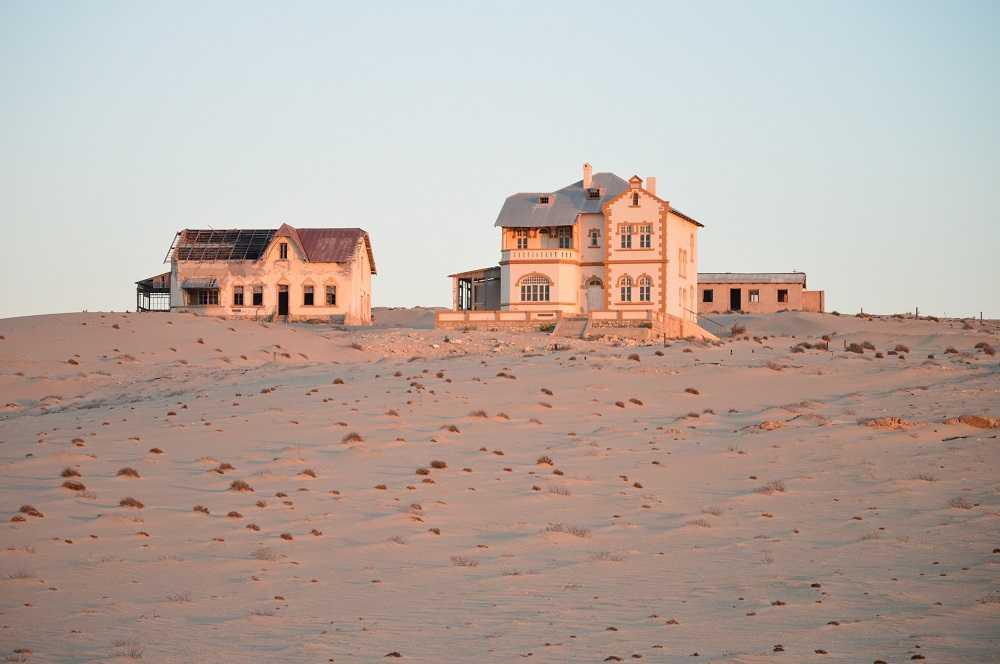
Shark Island Concentration Camp
The Luderitz Peninsula, known as Shark Island prior to 1906, only became a peninsula after the creation of a land connection that doubled its natural size.
During 1905-1907, the German authorities established a concentration camp on Shark Island. The camp held the Herero and Nama resistance fighters captured during the Herero Wars. Additionally, the camp’s inhabitants were used as slave labor for the expansion of Luderitz town, railway, port and colonial farms. As a result, between 1000 and 3000 prisoners died due to the harsh living conditions.
However, in modern times Luderitz Peninsula is a source of adventure for visitors due to the flamingo colony, local geology and colonial relics.
Water Source for Luderitz, Namibia
Luderitz, Namibia had no local fresh water source during the diamond boom years. As a result, fresh water was transported by ox cart or ship. However, after construction of the railway transportation became more economical.
An underground fresh water reservoir was eventually discovered 65km away. Therefore, a pipeline replaced the railroad to transport fresh water. As a result, the railroad has became obsolete. However, the railroad tracks are still visible near Kolmanskop.

The Original Source of Luderitz Diamonds
Diamond formation requires extreme heat and pressure that only exists very deep within the earth. Additionally, kimberlites serve as a transportation mechanism for bringing the diamonds towards the earth’s surface. The exposed diamonds now become vulnerable to the forces of erosion and eventually become exposed.
However, the conditions for the formation of diamonds do not exist in Namibia. As a result, the wealth of diamonds that are in Namibia are secondary deposits that originated in South Africa.
In South Africa, the Orange River just happens to flow through the kimberlite region. As a result, the Orange River transports the diamonds to the Atlantic coastline and the Benguela Current carries them to the SW Namibia coastline.
Namibia’s High Quality Diamonds
As a result of the long migration, the quality of the diamonds found in Luderitz, Namibia is very high. The transport erosion removes impurities and this results in a high ratio of gem quality diamonds. In Namibia, 85-90% of the diamonds found are of gem quality.
Unfortunately, in South Africa, only 15% of the diamonds located there are gem quality. No wonder South Africans have always had a very keen interest in Namibia!
Visit Kolmanskop Ghost Town
The chances of you finding a diamond on the side of the road in Namibia are pretty rare. However, one of the most compelling Luderitz things to do is to explore the local ghost town called – Kolmanskop.
It is possible to take tours of Kolmanskop, just hook up with a local tour agency. However, the more independently minded tourist can just drive out there in the evening. Its a great spot for some “gem quality” photos in the evening light and the area is easily accessible.
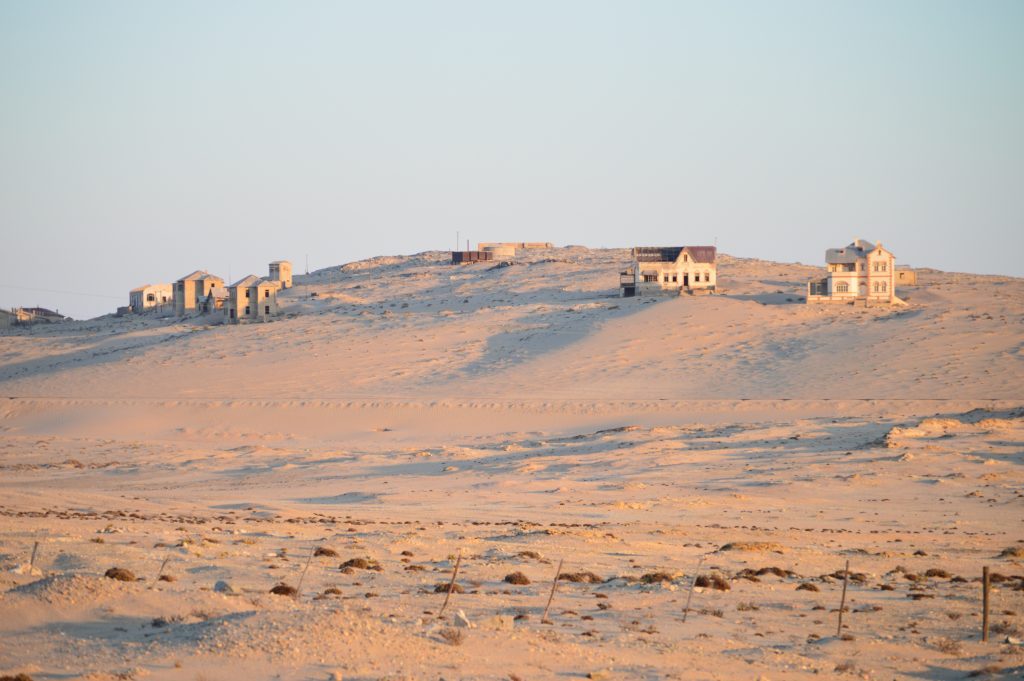
Barchan Sand Dunes
Luderitz is surrounded by copious amounts of desert sand. Indeed, Central South Africa is also the source of the Luderitz sand deposits. Contrast this with the native sand dunes found at Sossusvlei National Park.
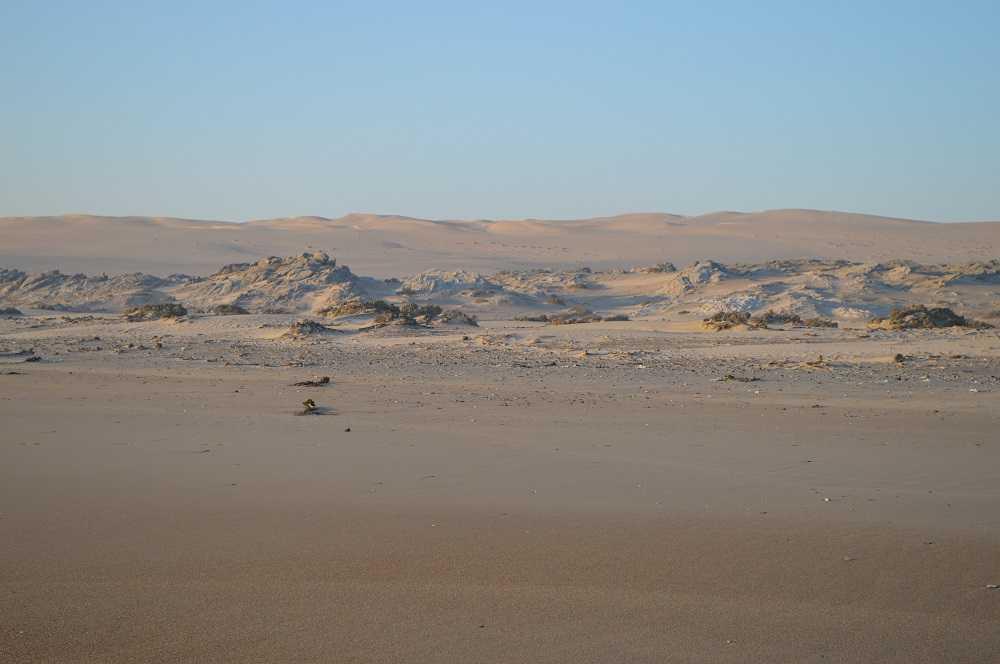
The Orange River is the transport mechanism which brings the sand to the coast which then catches a ride on the Benguela current. After being deposited in SW Namibia, it is blown northwards up the coast by the prevailing south west winds. This process results in the formation of the mobile “barchan” sand dune which are much smaller than the stationary “star” dunes at Sossusvlei.
Furthermore, the sand in SW Namibia is white in contrast to the reddish sand at Sossusvlei. The sand from South Africa is white because it lacks iron oxide content.
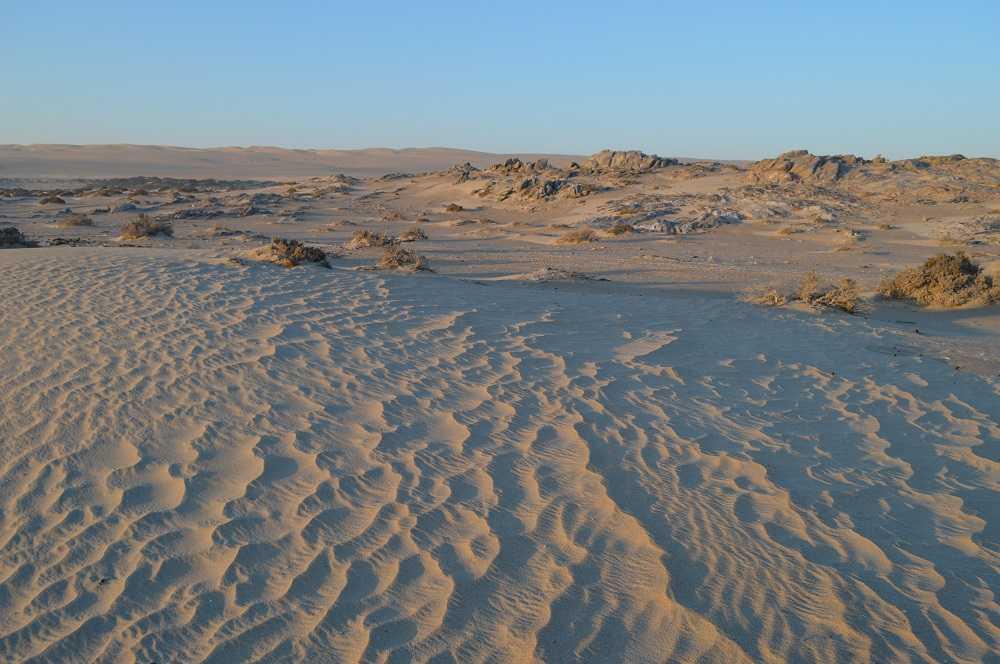
Due to their mobility, the barchan sand dunes commonly form on the Aus-Luderitz road. In fact, there are many signs in the area warning of the drifting sands. However, Aus-Luderitz road is also a crossing point for the local ostrich.
Ostrich Racing
The ostrich near Luderitz also use the Aus-Luderitz road for transportation. However, the ostrich were a little bit quirky because they would race alongside the vehicle and then try to dart in front of us.

Explore Shark Island (Luderitz Peninsula)
The Luderitz Peninsula is in itself a splendor of natural wonders. It will intrigue the geologist, archeologist and also the bird enthusiasts. Discover the oldest rock formations in Namibia on Shark Island. Prehistoric rock formations such as gneiss outcroppings are easy to find while you are exploring.
Visitors should be well prepared with 4×4 safari vehicle. If so, the best adventures await on “Shark Island”.
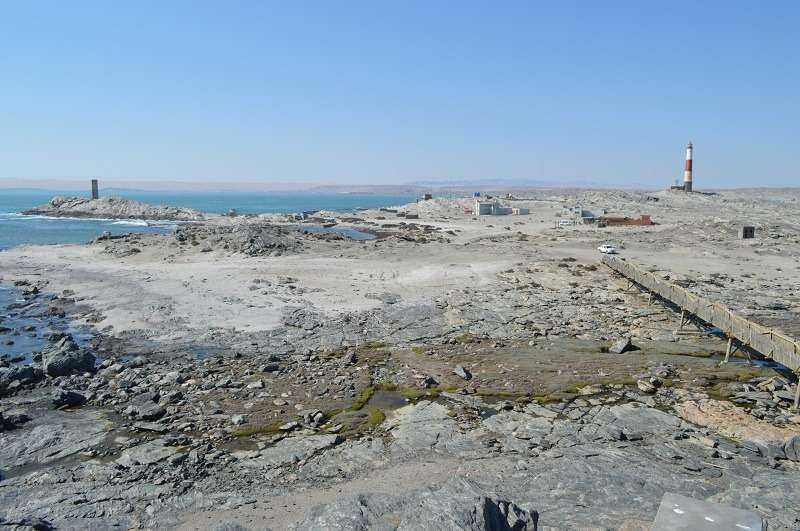
Discover the whaling stations and lighthouses that are still standing on the Luderitz peninsula. These are the long lost remnants of the European colonists.
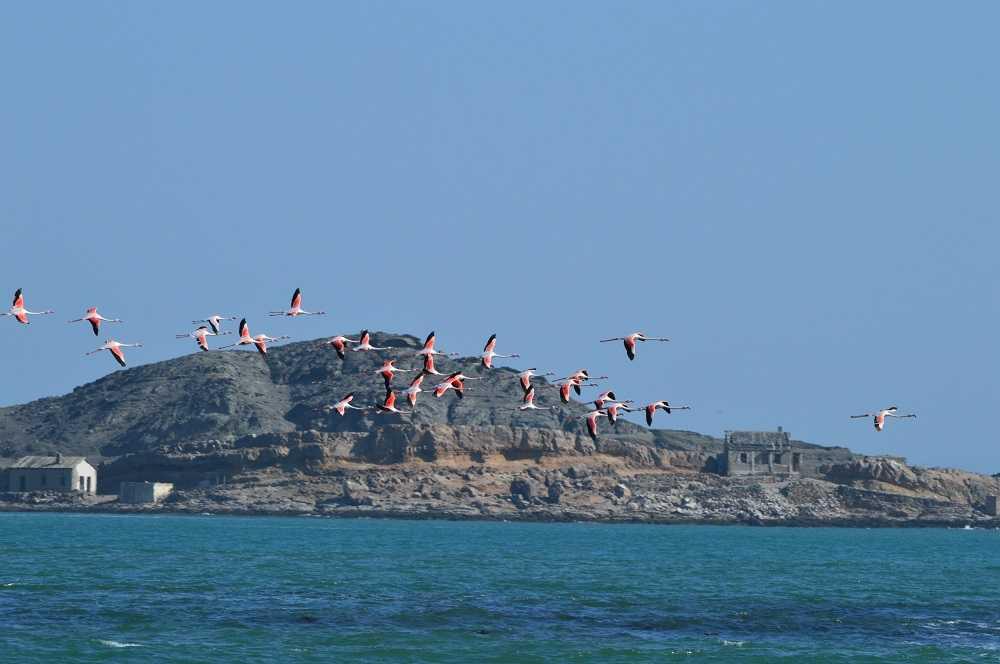
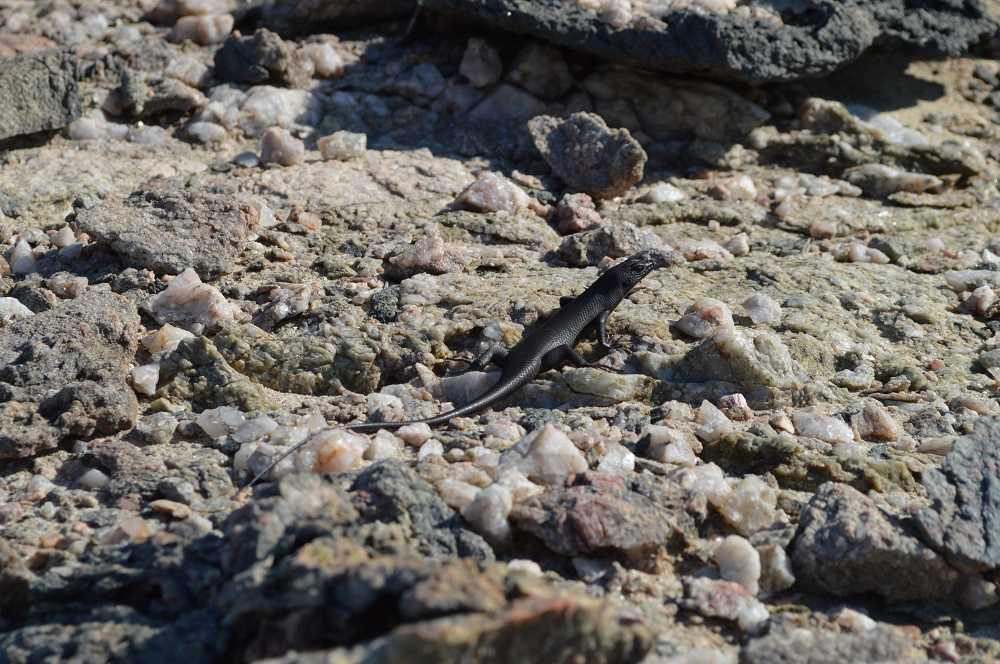
Shark Island Flamingos
In addition to novel geologic formations, there is a large flock of resident flamingos on the Luderitz Peninsula. Their habitat is the shallow salt marsh on the peninsula. We were able to get some fantastic photos of them in flight which is quite rare.

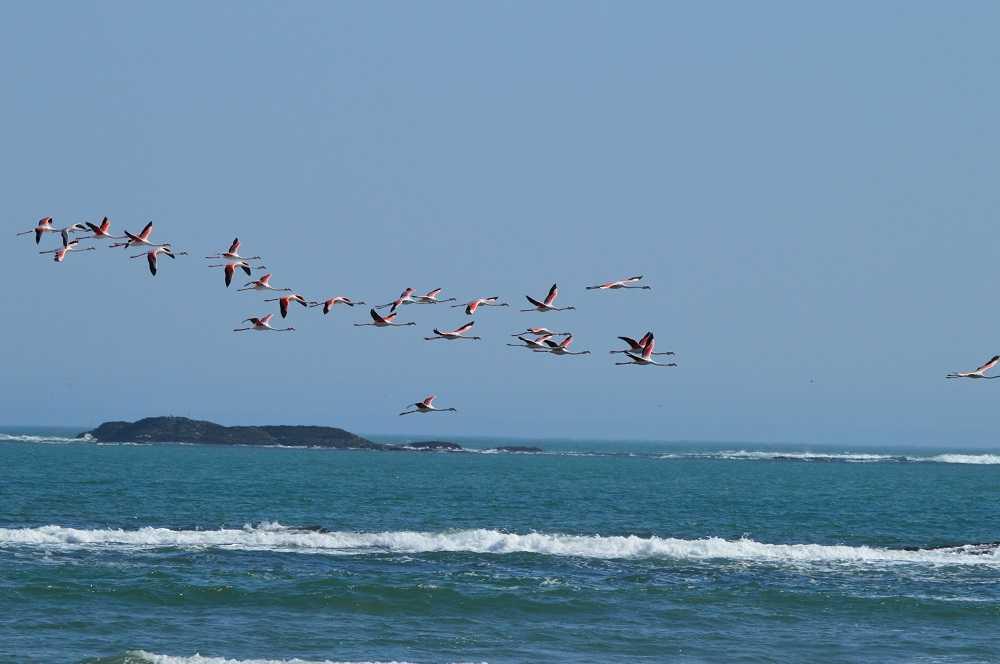

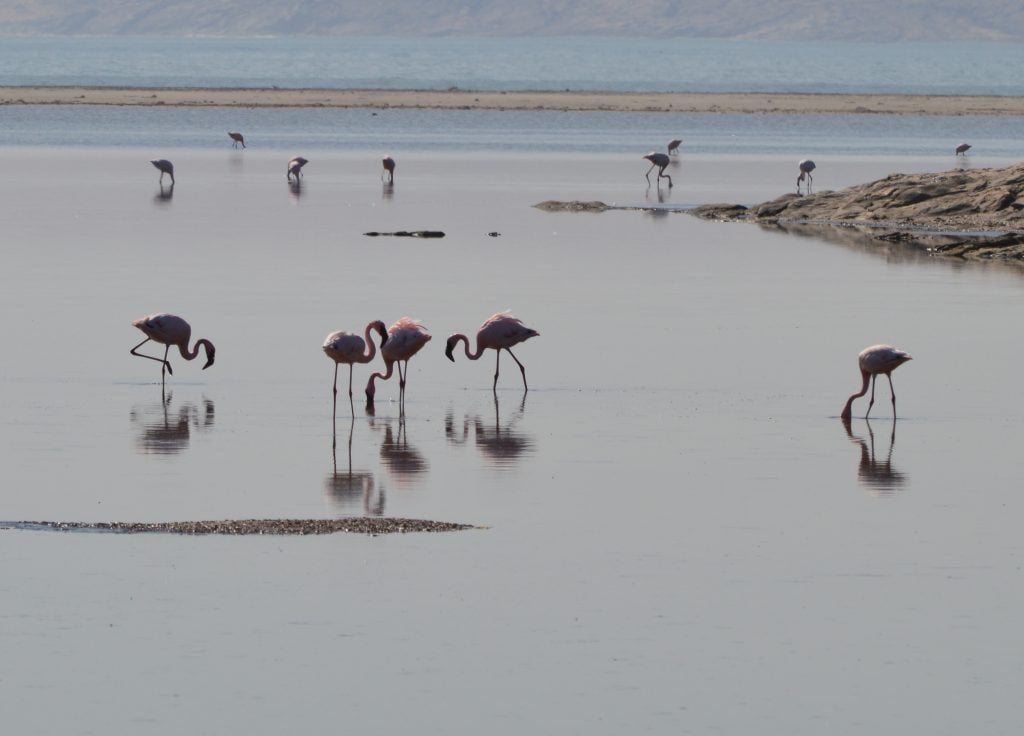
Visit Agate Beach
You should definitely explore Agate Beach. Agate Beach is located a few kilometers north of Luderitz town and it is a great place to catch the sunset. It also has surfing potential if you are so inclined. However, the water here is absolutely freezing due to the cold water Benguela current.

Visitors can dig for sandroses if they are in the company of a conservation officer. A permit from the Ministry of Environment and Tourism would be necessary. They have an office in Luderitz town. Additionally, it is possible to find agates with a bit of luck.
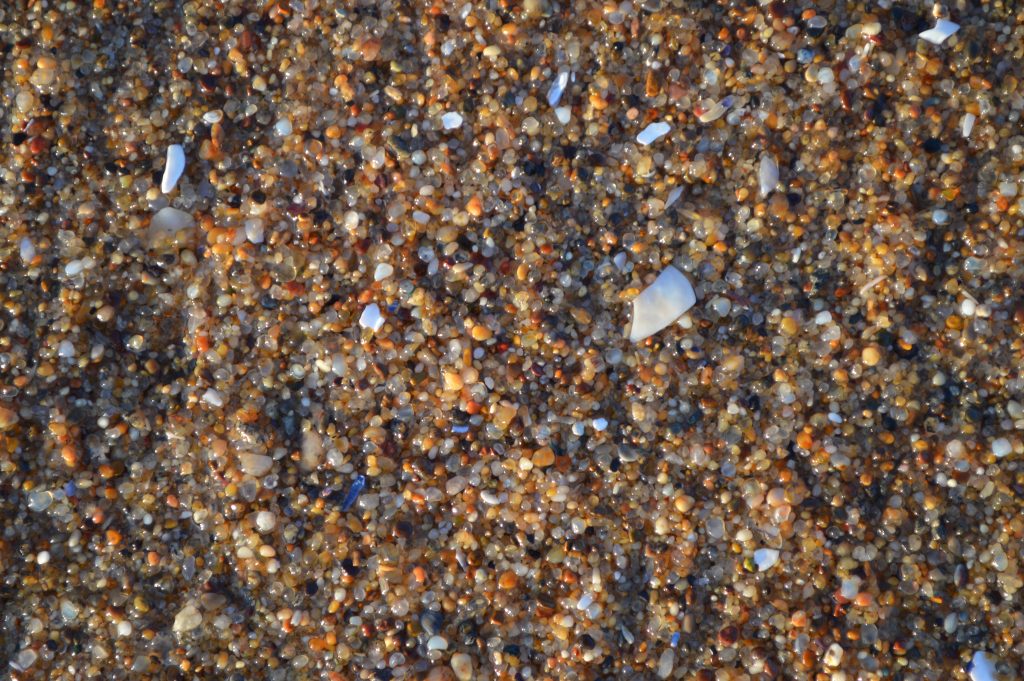
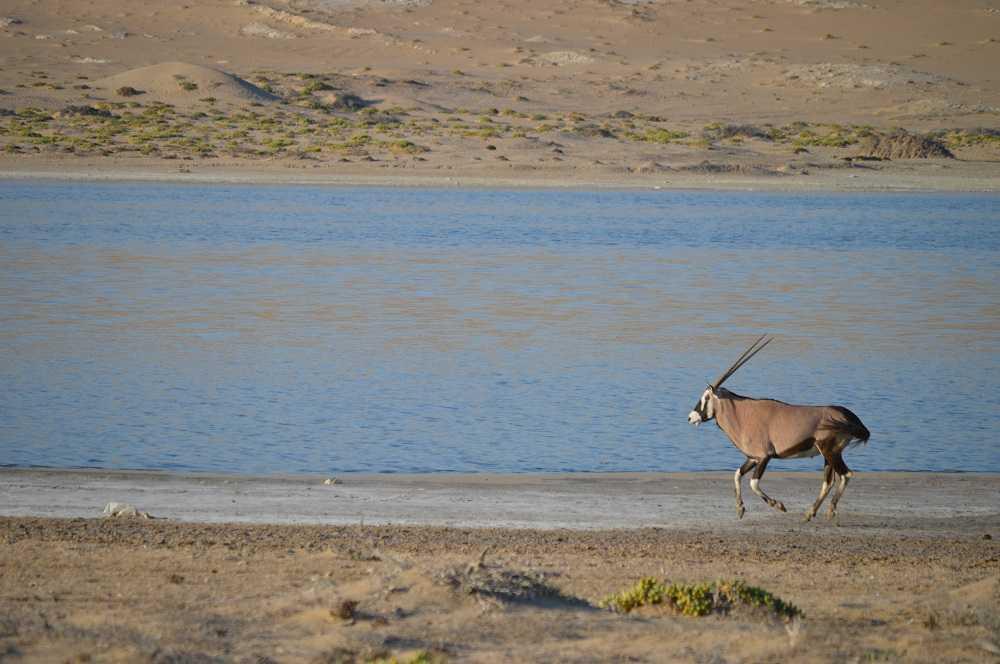
Luderitz Hotels and Accommodation
Unfortunately, Luderitz accommodation options are not so great. Although if I were to return, I think the bed and breakfast might be worth a try. Additionally, the restaurants in town are pretty bare bones, fish and chips is probably the best choice. However, Luderitz is not a luxury destination and we didn’t expect too much.
Nonetheless, the Luderitz things to do makes it an excellent adventure travel destination. Indeed, the desert flora and fauna is amazing. Plus, the flamingos were like a desert mirage and they created some excitement and great photo opportunities.
Namibia – Fascination of Geology
A Travel Handbook
Nicole Grunert

